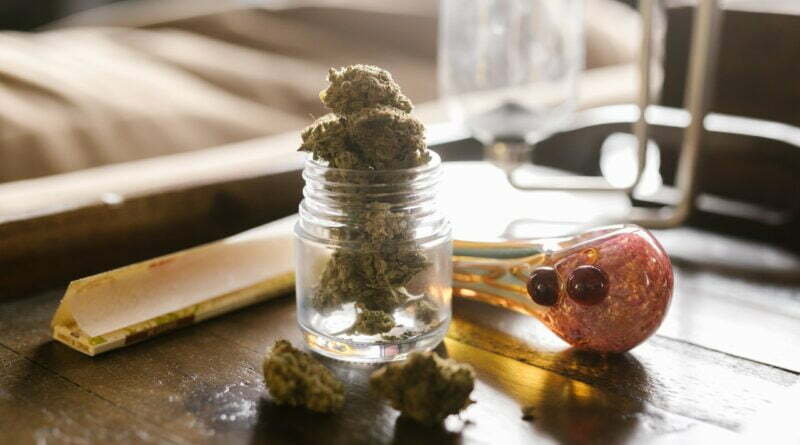Medical Cannabis and cannabidiol (CBD) will be mentioned in the media, in advertising, and in everyday conversation more than ever in 2020. CBD and Medical Cannabis are commonly used to treat a wide range of maladies, from chronic pain to glaucoma. In a variety of ways, both substances have rendered life more wonderful for millions of people.
How do CBD and Medical Cannabis differ therapeutically? There is often confusion regarding the two substances because they are incredibly intertwined (often in a literal sense) and are frequently mentioned together. What’s the difference between them? Do they differ drastically?
What Is Cannabis?
Cannabis comes from the cannabis plant which is rooted from either autoflower, regular or feminized breeds. Check out Homegrown Cannabis Co. to learn more. All over the world, people use this substance for therapeutic and recreational purposes. It is possible to smoke and inhale cannabis, to vaporize it, or to consume it by adding it to foods and beverages.
Cannabis – A Short History
Central Asia and the Indian subcontinent are the origins of the cannabis plant. Since before 3,500 BC, it was reportedly used in burial ceremonies across Eurasia for spiritual purposes. A quantity of cannabis was brought to Britain by Irish physician William Brooke O’Shaughnessy in 1842. The physician was a medical officer with the East India Company in Bengal and conducted research on cannabis while there.
In 1906, marijuana was made illegal in the United States. The use of cannabis remained illegal nationwide until 1973, when the states gradually decriminalized it. In 2012, Washington became the first state in the U.S. to lift its prohibition on cannabis after much lobbying and deliberation. There are currently 33 states with medicinal cannabis laws, and 11 states and the District of Columbia with recreational marijuana laws.
How Does Medical Cannabis Work?
Cannabis used for medical purposes is the same as other types of cannabis from the highest THC levels to the lowest CBD levels. Legal status is the only difference. It is illegal to use cannabis for recreational purposes in most US states except for medicinal purposes. This means that cannabis can only be used if a medical professional prescribes it. Learn more about THC at https://homegrowncannabisco.com/high-thc-seeds.
What Is CBD?
CBD stands for cannabidiol. The cannabis plant contains this cannabinoid. Cannabis contains CBD, one of its active compounds. Health-boosting and medicinal properties are associated with it.
In What Ways Are Cannabis And CBD Therapeutically Different?
CBD and Medical Cannabis have several therapeutic differences. Understanding these factors will help inform your decision on which substance is the best choice for you.
Cannabis’ psychoactive effects
A compound in medical cannabis called THC causes its psychoactive effects. A medical cannabis strain will typically be more psychoactive if it contains more THC. Cannabis’ active compound CBD only has a mild psychoactive effect. The effects of CBD are not psychoactive when taken alone.
Different legal considerations apply to medical cannabis and CBD treatments
There are important differences in the legal status of CBD and Medical Cannabis. 33 states have legalized medical marijuana. Federal law still prohibits the use of Medical Cannabis, despite state laws the state holds sway over and the federal ban only prohibits the transportation of Medical Cannabis among states. CBD, however, is legal in the majority of American states.
Medicinal Cannabis and CBD are provided with different therapeutic benefits
Medicinal cannabis and CBD have different advantages and disadvantages. Pain, insomnia, anxiety, muscle spasms, and IBS are the most common conditions treated with CBD. A wide range of medical conditions can be treated with medical cannabis. Aside from glaucoma, chronic pain and MS, migraines, cancer symptoms, arthritis pain, anxiety, depression, and insomnia, some people suffer from glaucoma also.
Different side effects are associated with CBD versus medical cannabis
CBD may cause mild diarrhea, tiredness, and a change in appetite as its only side effects. In addition to increased appetite, glazed eyes, drowsiness, increased heart rate, dry mouth, nausea, dizziness, and paranoia, medical Cannabis also has stronger side effects.
Medicinal cannabis and CBD can be ingested in a variety of ways
Hemp oil is the most common form of CBD consumption. Adding CBD oil to food or drinks is an option for taking CBD oil. The most common way to consume medical cannabis is to smoke it, but it can also be consumed or ingested.
Conclusion
In fact, they are different things. Despite the fact that CBD does contain psychoactive effects, Medical Cannabis is not psychoactive. Despite having a lot in common, CBD and Medical Cannabis often have very different uses and effects. For more information visit CBD School.

